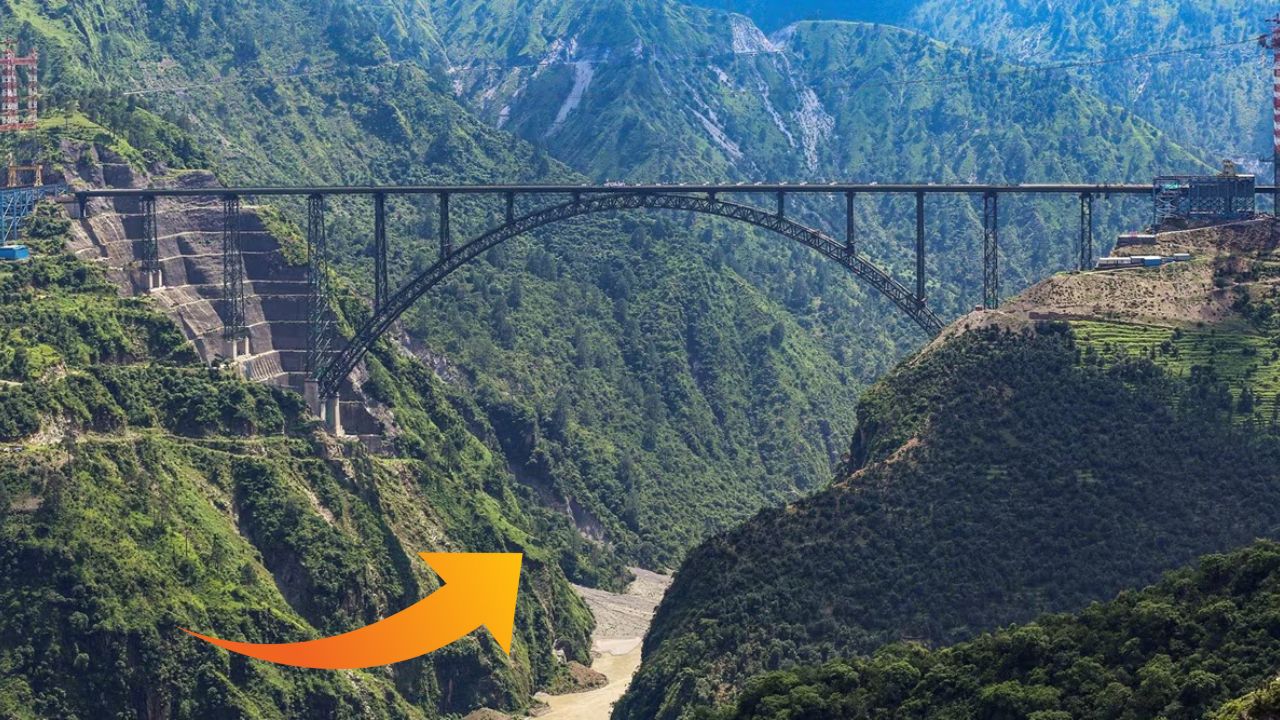The Chenab River is one of the most prominent rivers of the Indian subcontinent, forming a key part of the Indus River system. Its journey from the snow-capped glaciers of Himachal Pradesh through the verdant plains of Jammu and Kashmir and finally into Pakistan is both majestic and vital. Known in ancient texts as the Asikni or Chandrabhaga, the Chenab has served as a lifeline for agriculture, culture, and history.
In this article, we explore the origins of the Chenab River, trace its long and winding journey, understand its significance, and examine the role it plays in today’s geopolitical and environmental context.
Origin of the Chenab River: Where It Starts
The Chenab River begins high up in the Himalayas, in the Lahaul and Spiti district of Himachal Pradesh, India. Uniquely, the river is formed by the confluence of two smaller rivers:
-
Chandra River – Originates from the Chandra Glacier near the Baralacha Pass in the Lahaul region.
-
Bhaga River – Originates from the Bara-lacha la pass as well, flowing from a different direction.
These two rivers merge at Tandi, near Keylong, forming the Chenab River. From this point onward, the river takes on a new identity and begins its south-westerly journey toward the plains.
This glacial origin makes the Chenab a perennial river, fed by both snowmelt and monsoon rains, giving it a continuous flow throughout the year.
Course of the Chenab River: Path Through the Mountains and Plains
After its formation in Himachal Pradesh, the Chenab flows northwest through the rugged terrains of the Pir Panjal range and enters the Union Territory of Jammu and Kashmir near the town of Padder. It continues its journey through the districts of Doda, Ramban, and Reasi, carving deep gorges and valleys.
Key features of its course in India include:
-
Baglihar Dam: Located in the Ramban district, this hydroelectric project is crucial for local power generation.
-
Salal Dam: One of the earliest hydro projects on the Chenab, contributing significantly to the energy supply in Jammu and Kashmir.
As the Chenab leaves the mountainous terrain, it enters the plains of Jammu, broadening and slowing down before making its way across the border into Pakistan.
The River’s Journey in Pakistan: Expansion and Confluence
Once the Chenab enters Pakistan’s Punjab province, it transforms into a mighty river, watering one of the most agriculturally productive regions in South Asia.
Major cities and regions it flows through in Pakistan:
-
Sialkot
-
Gujrat
-
Jhang
-
Multan
In the plains of Punjab, the Chenab is joined by several other major rivers:
-
The Jhelum River merges into the Chenab near Trimmu.
-
Further south, the Ravi River joins it.
-
Eventually, the Chenab meets the Sutlej River, and together they form the Panjnad River—which finally merges into the Indus River near Mithankot in southern Pakistan.
This network of confluences forms the legendary “Punjab” region—literally meaning “land of five rivers”—where the Chenab plays a dominant role.
Where the Chenab Ends
The Chenab River ends its independent journey when it merges with the Sutlej River near Uch Sharif in Pakistan to form the Panjnad River. The Panjnad eventually joins the mighty Indus River, which continues onward to the Arabian Sea.
So, in geographical terms:
-
Start: Confluence of Chandra and Bhaga Rivers at Tandi, Himachal Pradesh, India
-
End: Confluence with the Indus River at Mithankot, Punjab, Pakistan
Read More: Jhelum River is Where to Start and Where to End
Hydrological Importance
The Chenab River forms an essential part of the Indus River system, which is the primary water source for millions of people in both India and Pakistan.
Key facts:
-
Length: Approximately 960 kilometers
-
Drainage Basin: Covers parts of Himachal Pradesh, Jammu and Kashmir, and much of Pakistani Punjab
-
Major Tributaries: Jhelum, Ravi
The river supports:
-
Hydropower generation in mountainous regions
-
Irrigation in the fertile plains
-
Drinking water and domestic use in urban and rural areas
Cultural and Historical Significance
Historically, the Chenab River holds immense cultural value. In Sanskrit texts, it was known as Asikni, meaning ‘dark-colored water’. In the Rigveda, the river is revered as part of the sacred geography of the Indian subcontinent.
One of the most romantic folk tales of South Asia, the legend of Heer and Ranjha, is set along the banks of the Chenab. It is said that Heer’s tomb lies near Jhang, by the river, symbolizing eternal love.
Geopolitical Relevance: The Indus Waters Treaty
The Chenab River is one of the three western rivers (along with the Jhelum and Indus) allocated to Pakistan under the Indus Waters Treaty of 1960, brokered by the World Bank between India and Pakistan.
According to the treaty:
-
India is allowed limited use of the Chenab’s waters for non-consumptive needs such as hydroelectric power generation, but must not alter the natural flow of the river in ways that harm Pakistan’s usage downstream.
-
This has led to ongoing diplomatic tension whenever India builds hydro projects (like Baglihar and Ratle Dams), with Pakistan expressing concerns over water security.
The river is, thus, not just a geographical feature but also a crucial strategic resource for both countries.
Ecological Aspects and Challenges
The Chenab, like many rivers in South Asia, is facing environmental pressures:
-
Pollution: Industrial waste and agricultural runoff in Punjab are affecting water quality.
-
Siltation and sedimentation: Affecting reservoir capacity and aquatic life.
-
Climate Change: Altering glacial melt patterns and seasonal flow volumes.
Sustainable management of the Chenab is vital, especially considering its role in food security and energy generation for two nations.
Read More: You Won’t Believe Which River is the Longest in India – It’s Not the Ganges
Conclusion
The Chenab River’s journey from the icy Himalayan heights to the fertile plains of Punjab and finally into the mighty Indus is a tale of natural beauty, cultural resonance, and strategic importance. It nourishes millions, generates power, and inspires legends—but it also demands careful stewardship.
With shared water resources becoming increasingly sensitive in a warming world, the Chenab serves as a reminder that rivers are not just national assets—they are shared lifelines that require cooperation, respect, and sustainable planning across borders.

